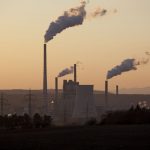What Does ‘Net-Zero Emissions’ Actually Mean?
- Categories:
- Climate Change

If you have heard any news reports about climate change, you have likely heard the term ‘net zero emissions’, but what does this actually mean? We explore all in this article.
What does ‘net-zero emissions’ mean?
‘Net-zero emissions’ doesn’t mean that no emissions are produced; it means that any emissions that are produced are balanced out by absorbing the equivalent amount. This can also be referred to as ‘carbon neutrality’ and is typically achieved through a combination of reducing emissions and carbon removal methods.
Whilst much of the drive to achieve net zero is for companies and individuals to reduce their carbon footprint as much as possible, having no emissions would be impossible in our society. Therefore, these measures need to be coupled with other tactics which aim to remove carbon from the atmosphere.
What is the current situation?
Even small changes in the amount of greenhouse gas have a huge effect on the earth. Even at the current 1.1 degrees Celsius of global warming, the polar ice caps are melting, heat waves are becoming more intense and more frequent, causing devastating wildfires such as those in Australia last year, and extreme weather such as intense storms which pose a threat to life are becoming more commonplace.
When does net zero need to be achieved by?
The short answer is, the sooner the better. In more specific terms, global greenhouse gas (GHG) emissions need to drop by half by 2030, and net zero needs to be achieved by 2050 if we are to avoid the worst-case scenario of climate change impact.
Due to the high levels of GHG they produce, developed nations will need to reach this goal sooner than mid-century. According to the Intergovernmental Panel on Climate Change, the sooner emissions peak, the more likely we are to achieve this goal.
What is being done to achieve net-zero emissions?
The Paris Agreement is a legally binding treaty on climate change, signed by 194 countries, stating that all parties must undergo economic and social transformation using science to limit global warming to below 2° Celsius, with an optimal goal of 1.5° Celsius.
120 countries and regions adopted net-zero targets as of June 2020, and several countries have introduced targets to achieve net-zero emissions by 2050 in advance of the next UN Climate Summit.
Due to differences in infrastructure, the scale of the changes that need to be made and current levels of GHG emissions, some countries have aimed to achieve net zero before 2050 while others, such as Japan and Singapore, aren’t projected to achieve net zero until the second half of the 21st century.
While it is impossible to put a timeline on achieving net zero that applies to all countries, according to an article on the World Resources Institute website, ‘there are, however, hard physical limits to the total emissions the atmosphere can support while limiting global temperature increase to the agreed goals of the Paris agreement’.
What can be done to reduce GHG emissions?
As mentioned earlier, the first step in achieving net zero is to reduce human-caused emissions, such as those caused by internal combustion engine (ICE) vehicles and fossil-fuel-powered factories as much as possible. We also need a global shift towards eating more plants and less meat, reducing our food waste, stopping deforestation, and decarbonising aviation and shipping, as well as cement, steel, and plastics.
This means there needs to be significant investment in clean energy such as solar and wind, industrial operations using electricity instead of gas for power, and switching over to electric vehicles and public transport.
Because GHG emissions can’t be reduced truly to zero, carbon removal methods are necessary to achieve net-zero emissions. This is possible through both natural practices and new technology.
Plants absorb carbon dioxide and produce oxygen, so reforestation and afforestation are natural solutions that need to be invested in. In addition to these practices, there are technological processes such as Direct Air Capture (DACS), where carbon dioxide is captured from the ambient air, and BioEnergy with Carbon Capture and Storage (BECCS), where bioenergy is extracted from biomass and the carbon is stored and removed from the atmosphere.
Achieving net-zero emissions as soon as possible means we have the best chance of saving our planet. Going forward, renewable and sustainable practices need to be our leading solutions, rather than ancillary ones to support and only minorly offset our more destructive industrial processes.
One way you can help in this fight on a daily basis is by using our charitable search engine, SearchScene, which donates 95% of profits to global charities like WWF and Eden Reforestation Projects that are taking action to make net-zero emissions a reality.
This article first appeared on Blogspot.










